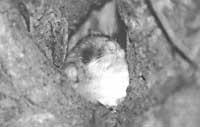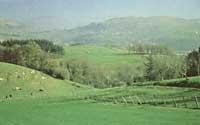Grey, blond liron!
1986/04/01 Mendiola, Iñigo Iturria: Elhuyar aldizkaria
article we begin a series dedicated to our mammal fauna with the aim of increasing knowledge of nature and, as far as possible, creating a broad conservation mentality.
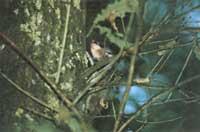
The situation of the fauna of a village is closely related to the changes of its natural environment. As is known, in Euskal Herria, especially in specific areas, the conditions of nature have undergone great changes. These changes have resulted in different effects on different species. The disappearance of the wolf, lynx or bear explains to us how much human influence can reach. Other species, without disappearing, have suffered a great regression and in other cases, those that have facility to adapt to the new situation, have become accustomed.
At European level the distribution of this species reaches Kaspio, but it is not found in the north of Scandinavia or in the south of the Iberian Peninsula. In this territory, specifically in the Cordillera de la Demanda, in La Rioja, and in the Ankares mountain range, in Galicia, are the most southern. It has a general distribution in the Basque Country, although it is not found in the Ebro Valley or the Ribera de Navarra.
The species of mammal, the grey liron, which we have chosen to start this section, indicates the ecological evolution of some wild animals and the evolution of nature.
The grey liron inhabits oak and beech forests, closely related to this type of plants. As a result of this link, this species has not been able to colonize the pine forest or any other habitat.
Living in the forests of Muxarra and leading a nightlife, it is certainly an unknown animal. It is a small animal, with a length of between 130-190 millimeters taking the head and body, and a tail of 110-150 millimeters. Its weight is usually around 150 grams, although a single old specimen can reach 200 grams. With the robust body and hairy tail is spectacular. His two large, vivid eyes stand out in the dark. Herbs are erect and illegal. The legs are short compared to the size of the body, while the claws are long. Its sharp barks allow it to ascend the surface of the tree.
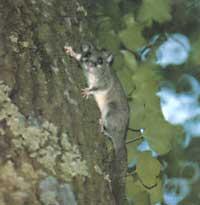
The body and tail are covered with long hair. On the back and tail it is gray and has given name to the species. White belly. When young they have a very light gray color, but when they reach maturity this gray becomes brownish. When they suffer this change, when the ventral and dorsal colors are joined, a yellowish line appears that goes from the end to the tail. With this color difference, adult and young slices can be distinguished.
The skull is a typical rodent. A hole called diastema appears in the horcada of rodents. In each gag consists of two incisors, two dental and six molars forming the dental formula 1013/ /1013. This formula serves to differentiate the family Gliridae from those of other rodents. In Euskal Herria there are two species of this family, the grey liron and the careto liron.
As mentioned above, the liron habitat consists of oak and beech. Today there are few oak trees left, so they live in beech or scrambled forests. In the trees of these forests holes are sought, considering them as refuge. The hole is opened by sharp incisors, since instead of getting a great depth many specimens come together in the same hole. In the young forests the lirones find an obstacle of great importance, that is, the shortage of old trees in which the holes are easier than in the young.
Throughout the year the liron has two phases. Active phase from June to November and hibernating phase from December to May. So spend half a year in winter. This sleeping nature has made this species famous. But his condition as hibernator has caused him physiological problems of great interest. The hibernation process reduces the body temperature of the animal and slows down the activity, overcoming winter anxieties.
Choose different winter shelters: rocks, tree holes, or underground.
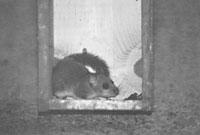
The factors that attract the beginning of winter are lack of food and environmental temperature. However, it is not very clear which of the two has the most strength to cause winter sleep.
Although winter sleep is six months, in this period of time the animal can be sown if the ambient temperature increases or it feels agitated.
When in June it leaves the winter period, the liron begins in the active phase and begins to look for the holes of the trees, although in the absence of them there are other alternatives. For example, the drawers that squeeze in the trees. Use the boxes that are placed at European level and our forests for the lirones, the birds nest.
In this second phase, the lirones develop their most important activities. One of them is undoubtedly fertilization, which begins when winter has just ended.
Sexual activity in males is already evident in June, but its maximum occurs in July.
Females have a single breeding a year. The delivery period is in late August and early September. It is estimated that gestation lasts about twenty-eight days. By chance we can think that fertilization occurs in July and early August, considering that during these months males have the maximum sexual activity. Children take breast milk until late September or early October, since since then females do not usually have their breasts uprooted. Therefore, the fertilization activity of the sargos extends from June to October.
Then, their main problem, both for adults and children of the year, will be to collect as much food as possible, because thanks to the reservations they receive now they will have to spend a long winter. The most important energy reserve is fat. So before winter comes, the lirones gain a lot of weight. Both under the skin and around the internal organ appear thickened animals.
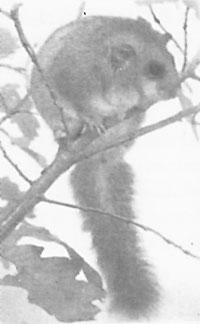
The liron also uses another way of having reservations; keeping food in the holes it has as a warehouse.
Medicinal powers have been found to the fat of Muxarra, used to cure joint diseases. Although this use is not well known, it was quite widespread in folk medicine. Today, of course, modern medicines have ruled it out. However, liron fat remains appreciated. Therefore, when autumn comes, some people will look for sargos to the big beech, especially to Aralar, Urbasa, etc. But the capture of the lirones has another reason, that is, its spider is of very good taste, at least for those who are accustomed. Keep in mind that the Romans already knew the gastronomic interest of this animal.
The types of food for this species are very limited. Acorns, hazelnuts, chestnuts and dried fruits of beech and oaks are the staples.
In the years in which there are many acorns in the beech trees you can easily see the sainante of the sargos, since in the surroundings of the trees appear fragments of bark of fruits.
To finish this article we want to make a call for conservation. The grey liron is currently protected in Álava, Bizkaia and Gipuzkoa. But as we applaud this measure, we have to say that it is necessary to preserve our oak, beech and native forests, so that the liron and with it some species that are in the state of the liron of our fauna continue to live among us.

Gai honi buruzko eduki gehiago
Elhuyarrek garatutako teknologia




